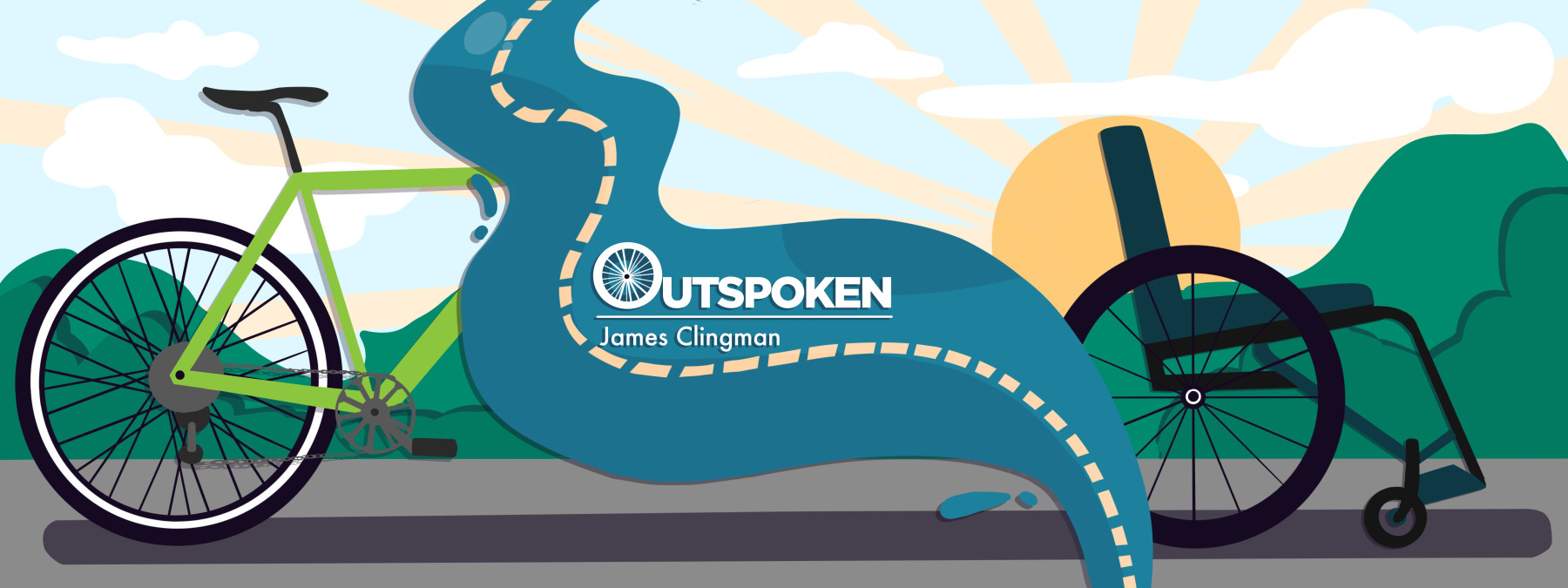My Cycling Days May Be Over, but I’m Still in the Pace Line
How pace lining helps the ALS community support one another

I contend that most people diagnosed with physically debilitating illnesses later in life previously had a favorite activity that consumed much of their time. Cycling was that for me. My cycling life ended nine years ago, and even then, I reluctantly stopped because of my inability to unlock my feet from the pedals.
Freewheeling alone on some country road, doing club rides in the evenings, riding to another city at the crack of dawn, and exploring new routes in and out of state were all so satisfying.
I also had my time as a licensed racer back in the late 1980s and early ’90s. From there, I began doing more touring and other challenging rides, especially with much younger and stronger riders. Road races and time trials were my favorites, and I found more of those opportunities in the National Senior Games. I won eight gold medals and two silver ones in those competitions.
A 2,000-mile ride across six states; conquering the highest point east of the Mississippi River, Mount Mitchell, North Carolina, three times; speeding down the Blue Ridge Mountains at nearly 60 miles per hour; taking a few falls along the way; and enjoying the freedom and independence of being on my bike — well, the joy I felt isn’t easy to explain.
But out of all of the above, one of my most pleasant ways to ride was in a pace line. Being out on a lonely road with only the sound of the tires whirring on the smooth pavement is hard to beat.
Having the privilege to write this column is a way for me to get back into the pace line. Let me explain.
In a pace line, every rider gets a chance to lead, which requires more energy than it does to follow from behind. After taking point for a while, he or she peels off and drifts to the end of the line where they can recoup before rotating back to the front. The longer the line, the better.
ALS patients can mimic our own pace line by participating in support groups and taking the lead in sharing information that others may not have. Then we can sit back and learn about opportunities and resources and be encouraged and refreshed, ready to take the lead once again.
The ALS pace line is long, as it’s not limited to patients. It also comprises medical and legal experts, technologists, advocates, caregivers, and regular folks who just want to help by taking the lead every now and then. They give us more energy.
As for me, when I’m tired and feel like giving up, I drift to the rear of the line to throw my personal pity party (no one else is invited) to sulk. Relief comes when I notice the previous pace-line leader coming to take my place at the rear. I know that person is more tired than I am. I now have the obligation to “pull” that rider, allowing him or her to keep up with the pace line rather than drop out.
Pace lining relies on the simple function of drafting, the way geese fly in formation. Even if one gets too tired and has to land to take a breather, another goose will go down and wait for him to recover. Similarly, when a pace-line rider has to stop, maybe for a flat tire, someone will stop to help fix it, and then they chase down the group.
We who suffer from degenerative and debilitating illnesses may be helpless, but we aren’t useless. We just need a brief pull sometimes to get us back in line. Most importantly, I never take for granted how blessed I am to have lived so long with ALS. I even have the ability to take the lead every now and then — in my new pace line.

James Clingman leads the pace line with his old bike buddies in Cincinnati. (Courtesy of James Clingman)
Note: ALS News Today is strictly a news and information website about the disease. It does not provide medical advice, diagnosis, or treatment. This content is not intended to be a substitute for professional medical advice, diagnosis, or treatment. Always seek the advice of your physician or other qualified health provider with any questions you may have regarding a medical condition. Never disregard professional medical advice or delay in seeking it because of something you have read on this website. The opinions expressed in this column are not those of ALS News Today or its parent company, BioNews, and are intended to spark discussion about issues pertaining to ALS.







Comments
Mary Connolly
Words of wisdom for pALS, cALS and ffALS (friends and families).
Thank you.
Kiah Clingman
Thank you everyone so much for your amazing comments. I've shown them all to my dad and he appreciates your thoughts and well wishes. <3
john
Wow! Really nice write up! I, too, used to ride a lot, and can sure relate to how you enjoyed it. I did make a trip to ride in the Northwest Kingdom a few years back, even did a couple of self-directed rides in UK and also in France. And now, 81, and with a recent bulbar-onset version of ALS, I'm busy adjusting to my rapidly changing bod! Oh, well, it's been a good life.
Louis Savarese
James,
You are a Gem! Thank you so much for your story, attitude and resilience. God Bless you and never relent!!
Louis
Karl Schachtner
James, As previously avid bike rider too, I agree you’re pace line analogy is perfect! Bless you for sharing your wisdom!
Colleen Foster
Thank you James for a great positive article. Having another person with ALS having such a positive, realistic approach helps. A lot of what life throws ones way, is how we handle it. You gave me inspiration to see there are good days and its normal to have bad days, but let them go..
Rich Roccaforte
I have enjoyed riding the backroads north of State St in Omaha NE. I was recently diagnosed with bulbar ALS, I have thought about an electric bike, riding has been my love for a number about 33 years. My wife and I visited with a neurologist last May we were told that it was the way I was aging, at that time my speech had been had been deteriorating. Any feedback I can receive concerning electronic bikes would be greatly appreciated!